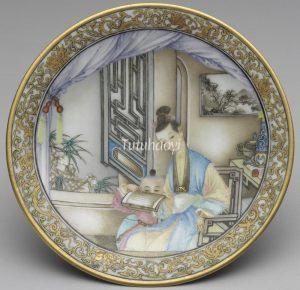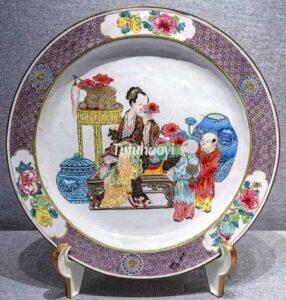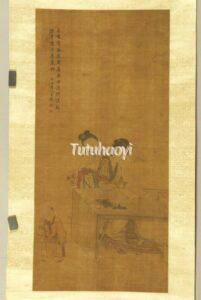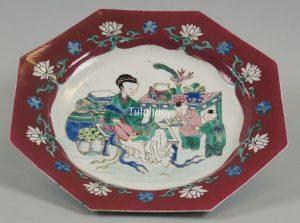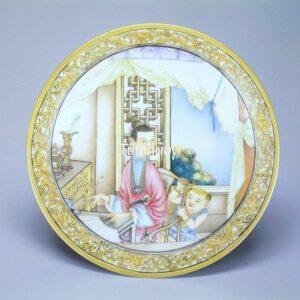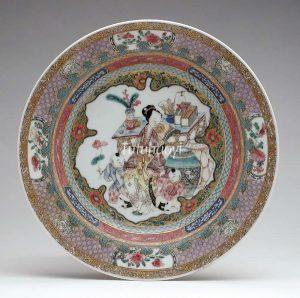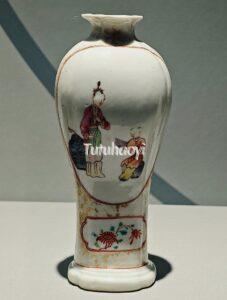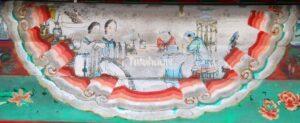Teaching the child
课子图
© Tutuhaoyi.com owns the copyright of the description content for the images attached. Quoting all or part of the description content on this page is permitted ONLY IF ‘Tutuhaoyi.com’ is clearly acknowledged anywhere your quote is produced unless stated otherwise. (本页描述内容版权归Tutuhaoyi.com所有,转发或引用需注明 “Tutuhaoyi.com”, 侵权必究, 已注开源信息的条目除外。)
Paintings featuring mothers (and/or fathers) and children are commonly referred to as ‘Ke Zi Paintings 课子图’, which in modern terms would be called ‘Parent-Child Paintings’. In these images, the mother is depicted either sitting or standing, guiding, and disciplining one or several children as they play, read, or practise calligraphy. The scene portrays the mother as both a loving caregiver and a strict teacher, embodying the hope that the child will grow up to achieve greatness. It also serves as a reminder to grown-up children to be grateful to their parents.
Explanation by Rachel Ma
Related Figures and Stories:
Fig 1: falangcai porcelain dish, Qianlong period (1736–95), Qing dynasty, courtesy of the National Palace Museum, Taipei
Fig 2: copper dish with enamelled decoration, late Yongzheng to early Qianlong period, Qing dynasty, courtesy of Tianjin Museum, China
Fig 3: Ke Zi Tu (课子图), hanging scroll, ink and colour on silk, Kang Tao (康焘 active during Qianlong period), Qing dynasty (1644–1911), courtesy of Zhejiang Provincial Museum, China
Fig 4: porcelain plate with overglaze enamelled decoration, Qianlong period (1736–95), Qing dynasty, courtesy of the Metropolitan Museum of Art, New York
Fig 5: falangcai porcelain dish, Qianlong period (1736–95), Qing dynasty, courtesy of the National Palace Museum, Taipei
Fig 6: porcelain plate with overglaze enamelled decoration, late 18th – early 19th century, courtesy of Los Angeles County Museum of Art
Fig 7: gilded porcelain vase with overglaze enamelled decoration, Qing dynasty (1644–1911), courtesy of Dongguan Museum, Guangdong, China
Fig 8: coloured fresco on the door way of the Long Corridor of the Summer Palace, Beijing, Republic period (1911–49)
